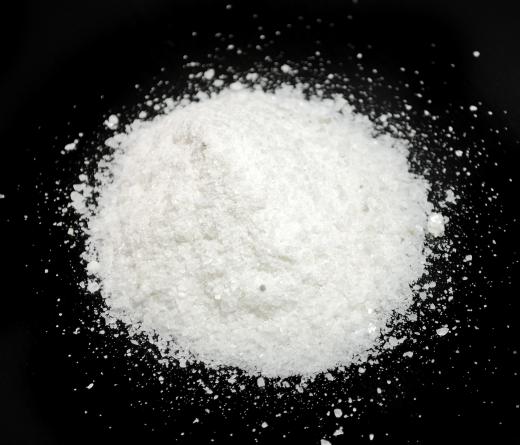Fire resistant clothing refers to clothing items that are treated with fire retardant chemicals in order to prevent them from burning in case of a fire. Some other varieties are made from fabric that is naturally fire retardant or from a combination of both methods. They are commonly used for workers in certain high risk areas as well as in the production of children's clothing. Most clothes and bedding, especially those intended for high risk individuals like infants and military workers, must meet governmental standards for fire safety.
Most fire resistant clothing is coated with chemicals such as borax, chlorine, or boric acid. These resist flames and will not burn under normal conditions. Those who wear clothing treated with these materials are generally protected against fire for much longer periods of time than those who are not wearing fire resistant clothing. Some provide more protection than others, as there are items of heavy duty flame retardant clothing which are intended for those who work under very high risk situations. This commonly include those in the military, some factory workers, and rescue workers with both the fire departments and emergency medical teams.

Fire retardant clothing items work by preventing the flame from reaching clothing and the person wearing them. The chemicals used to make clothing fire resistant release either bromine or chlorine, which combine with atoms in the flame. This breaks the burning cycle by slowing down the reactions necessary for flames to occur. These chemicals generally act to remove certain compounds or elements that are needed to sustain the fire.

Infant garment manufacturers are often required to distribute fire resistant clothing for young children. This is because kids are not able to remove themselves from house fires as adults normally can, and it adds an extra layer of protection for them until help can arrive. Bedding is also normally required to be fire safe.
There have been some concerns over the use of fire retardants in bedding materials, as some studies show that there is a period of off gassing. This means that fumes from the chemicals used in making the items fire resistant waft into the air. Whether or not this is a health concern is up for debate. Washing clothes and bedding prior to use may help to offset any potential gas inhalation and potential skin irritation. This is an especially good idea in regards to infant items.

Some fire resistant clothing is made from materials that are naturally slow burning. These can include organic cotton and wool, which are naturally less prone to burning because the fire can be smothered in the thick fibers. Some manmade fabrics, like aramid fabrics used in the creation of body armor, are also flame resistant. These can also be treated with chemical methods to increase their effectiveness.
